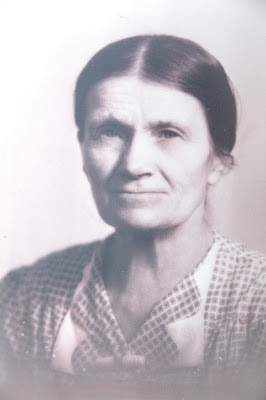When I was about 12 years old, I was visiting with a second cousin of mine and we turned to the topic of our family. The conversation turned to talking about our relatives in common. The conversation sounded something like this...
"My mom has always loved Aunt Mary. We always enjoy visiting with her," I said.
My cousin replied, "Wait, Aunt Mary...who is your Aunt Mary? It wouldn't be my Aunt Mary, would it?"
I pondered, "Well, no, I guess it would be your grandmother, Mary. Who is your Aunt Mary?"
My cousin said, "Well my Aunt Mary is my dad's sister, but HIS Aunt Mary would be YOUR grandmother, right? But, I think he had another Aunt Mary too?"
My reply, "Oh, this is just confusing!"
My guess is that if you are reading this and are of Rusyn descent, chances are you also have at least one Aunt Mary or at the very least a Great Aunt Mary or a cousin Mary or two!
Traditional Rusyn naming practices were pretty specific for both sons and daughters. These practices lead to confusion when doing genealogical research as so many individuals share names with other family members, oftentimes even repeating generation after generation.
When it came to naming sons in the Rusyn culture, it generally went like this: 1) the first son was named after his father, 2) the second son was named after his paternal grandfather, 3) the third son was named after his maternal grandfather and then finally, 4) the next son was named as parents wished. This meant names would be repeated generation after generation. It wasn't until a family had a fourth son that the name might change to a non-generational name or at least a name that was from a family member that wasn't as closely related (often the name came from a family member what was recently deceased). This was not a "strict" practice and was often observed with some variation, but was the traditional guideline for naming sons.
The practice of naming girls was also very structured. How many of you have a female relative who is named Helen? How about Anna? Maybe Mary? In each Rusyn family, tradition indicated that the first daughter be named Mary, second daughter Anna and then the third daughter Helen. After that, girls were generally named after another family member or a name with Biblical origin. Again, as with naming the sons, this "protocol" wasn't aways followed, but most families included daughters with at least one or two of these names and/or sometimes they used these names but in a different order.
Is your head spinning yet? Take a minute to look at an example. Consider this fictional family (based on real family names):
There are two brothers, John & Alex Taczak. Their father's name is John Taczak. Their paternal grandfather is Alex Taczak. Their maternal grandfather is Paul Gernat.
John Taczak (the older brother) and his wife Mary have sons John, Alex, Paul and Michael and daughters Mary, Helen, Anna and Eva.
Alex Taczak (the younger brother) and his wife Helen have sons Alex, John, Paul and William and daughters Mary, Anna, Helena and Catherine.
In this example, there are already four John Taczaks, four Alex Taczaks, three Helen Taczaks, three Mary Taczaks and multiple others that share the same name! This example shows only the children of two brothers---most families had many more children thus the results of the naming practices were exponential. Plus, most families resided in the same village for generations, so eventually cousins were marrying distant cousins---which just added to more confusion with names. As one might imagine, this leads to confusion in genealogical research. Getting the names and dates nailed down for different ancestors can be difficult. Knowing this naming pattern exists can certainly help with identifying ancestors correctly. Obviously not everyone adhered to these practices completely and/or regional differences existed, but generally speaking this was the traditional way Rusyn people named their children.
So, if you ever wondered about why you had so many aunts, uncles and cousins with the same name, now you know why! Watch for a post soon on Rusyn surnames. There are more practices with surnames that lead to even more confusion!
 |
Here is a good example of Rusyn naming practices. This is an example from the "Slovakia Census"
taken in 1869 in what is currently modern-day Circ, Slovakia.
Father's name is Gyorgy, first daughter is Maria, first son Gyorgy and second daughter Anna. |
References for this post:
http://www.carpatho-rusyn.org/crs/rnames.htm
http://www.carpatho-rusyn.org/gord.htm
http://www.rusyn.com/crgiven.htm
http://www.tccweb.org/index.htm











